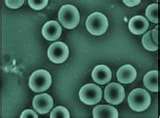Humic & Fulvic Acids and the Somatid Connection
Humic acids give the soil life and vitality... or is there more?
In the universal scheme of things there lies, somewhere between energy and matter, sub-microscopic energy particles called Somatids. Somatids do not have any DNA or RNA yet they maintain a kind of ‘genetic memory’ as they develop. They appear to be pre-cursers of DNA, or instrumental building blocks for DNA formation. The somatid is considered indestructible because it has survived temperatures of 1000 degrees centigrade and millions of rads of radiation.
When an animal, plant or microbe cell is functioning properly, and is properly nourished, the Somatids live through a simple and energetic three-phase cycle. This three-phase cycle apparently has a function in helping cells; plants and animals maintain vitality, energy and health. However, whenever the cellular fluid deteriorates for any reason (toxins, stress, trauma, poisons or deficiencies), the Somatid cycle changes into a 16-phase cycle that includes bacteria and yeast forms that do not promote robust health but actually may parasitize and contribute to the deterioration of the host energetic three-phase cycle. This three-phase cycle apparently has a function in helping cells; plants and animals maintain vitality, energy and health. However, whenever the cellular fluid deteriorates for any reason (toxins, stress, trauma, poisons or deficiencies), the Somatid cycle changes into a 16-phase cycle that includes bacteria and yeast forms that do not promote robust health but actually may parasitize and contribute to the deterioration of the host
condition.
Now, what is the connection between Somatids and Humates? Billions of living cells from massive numbers of plant, animal and bacterial bodies all containing sub-microscopic Somatids, (energy masses), have been concentrated through decomposition to form one gram of Humic substance. These indestructible energy masses have been concentrated into a lower level energy mass waiting to be awakened by the forces of the universe to revitalize the life cycle here on Earth.
Now, when we examine closely the structures of our commercial sources of Humates, Coal and Leonardite, we will find the energy bundles called Somatids. These are merely decomposed matter from Earth’s biosphere that were frozen at some instant in time millions of years ago.
A rival of Louis Pasteur, Antoine Bechamp, reported the first discovery of Somatids in the 1850-1880 period. Bechamp called them microzymas. Then in 1917, a German doctor Guenther Enderlein reported on similar bodies based on the studies reported in 1901 by two other Germans, Robert Leuckart and Otto Schmidt. Wilhelm Reich discovered and reported similar bodies in human blood and called them ‘bions’. He described them as ‘some kind of transitional form lying between the animate and the inert.’
Gaston Naessens more recently discovered Somatids through a special, high powered, dark field microscope. A great deal of turbulence has resulted in the scientific community regarding his work, of which has indicated potential remedy for strengthening immune systems in people, and claims of potential cures for certain cancers. Read ‘The Galileo of the Microscope’ by Christopher Bird for further information on Somatids. Other source information can be found in the ‘Wikipedia’ web site.
|



 energetic three-phase cycle. This three-phase cycle apparently has a function in helping cells; plants and animals maintain vitality, energy and health. However, whenever the cellular fluid deteriorates for any reason (toxins, stress, trauma, poisons or deficiencies), the Somatid cycle changes into a 16-phase cycle that includes bacteria and yeast forms that do not promote robust health but actually may parasitize and contribute to the deterioration of the host
energetic three-phase cycle. This three-phase cycle apparently has a function in helping cells; plants and animals maintain vitality, energy and health. However, whenever the cellular fluid deteriorates for any reason (toxins, stress, trauma, poisons or deficiencies), the Somatid cycle changes into a 16-phase cycle that includes bacteria and yeast forms that do not promote robust health but actually may parasitize and contribute to the deterioration of the host